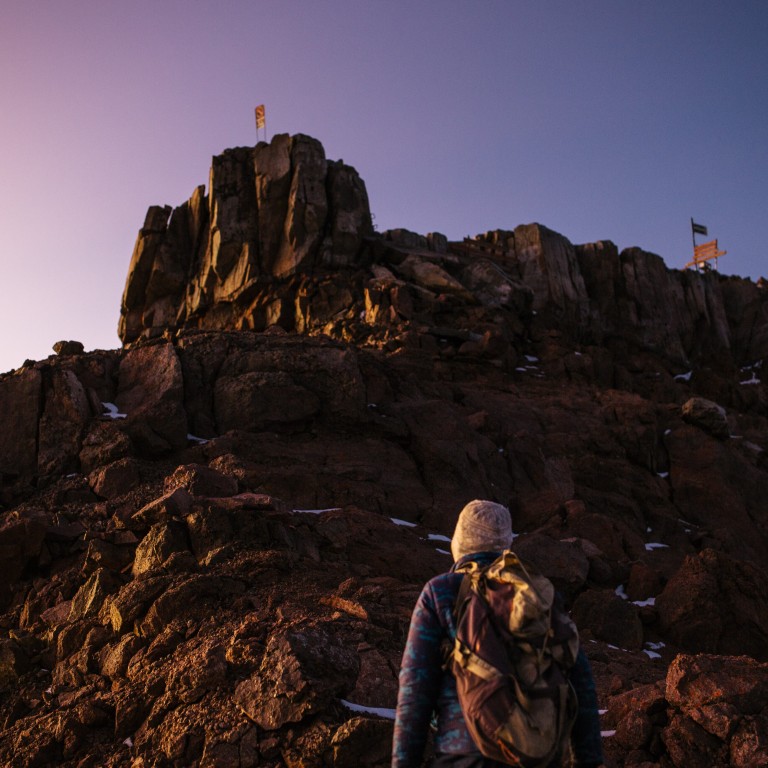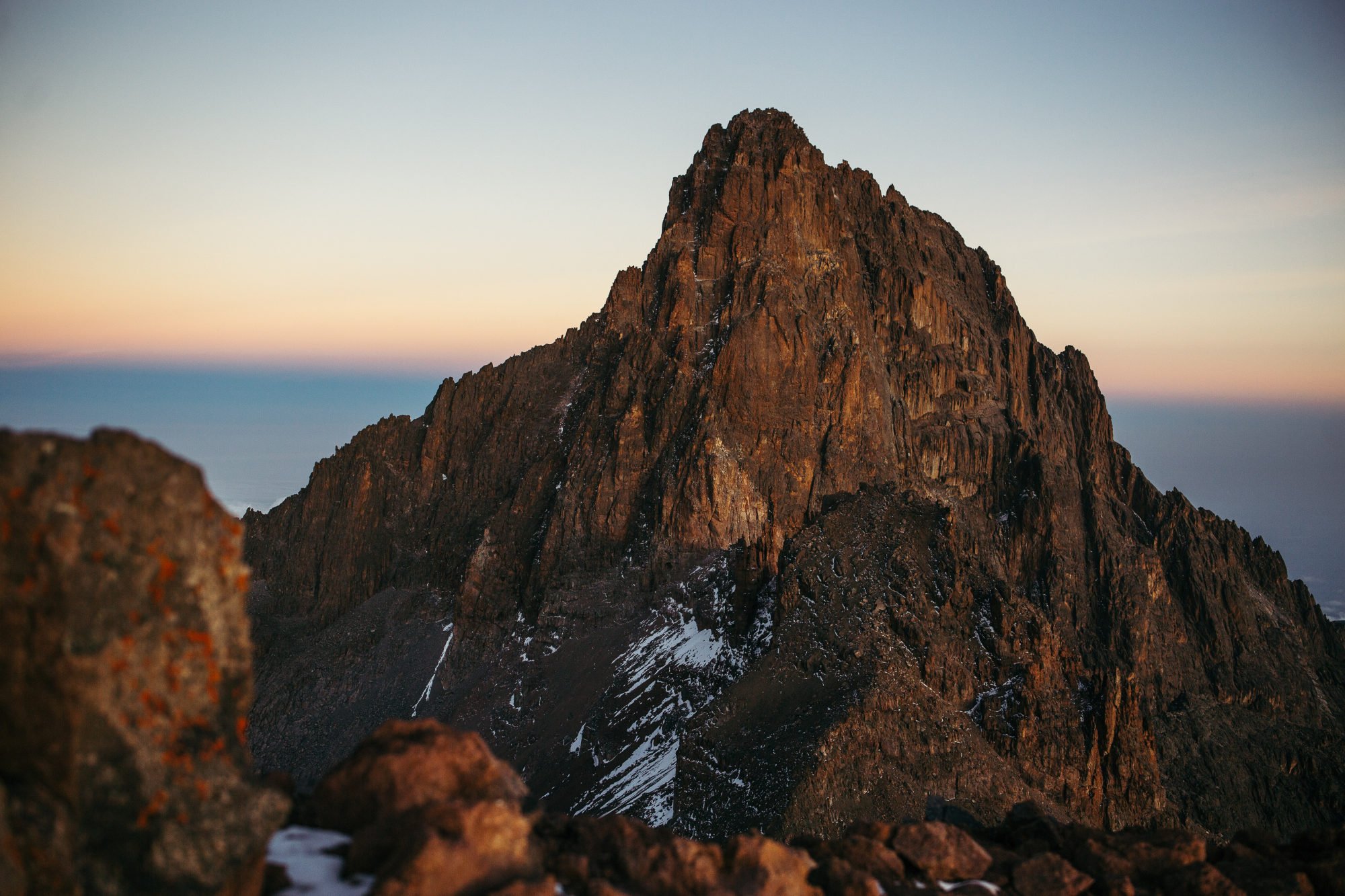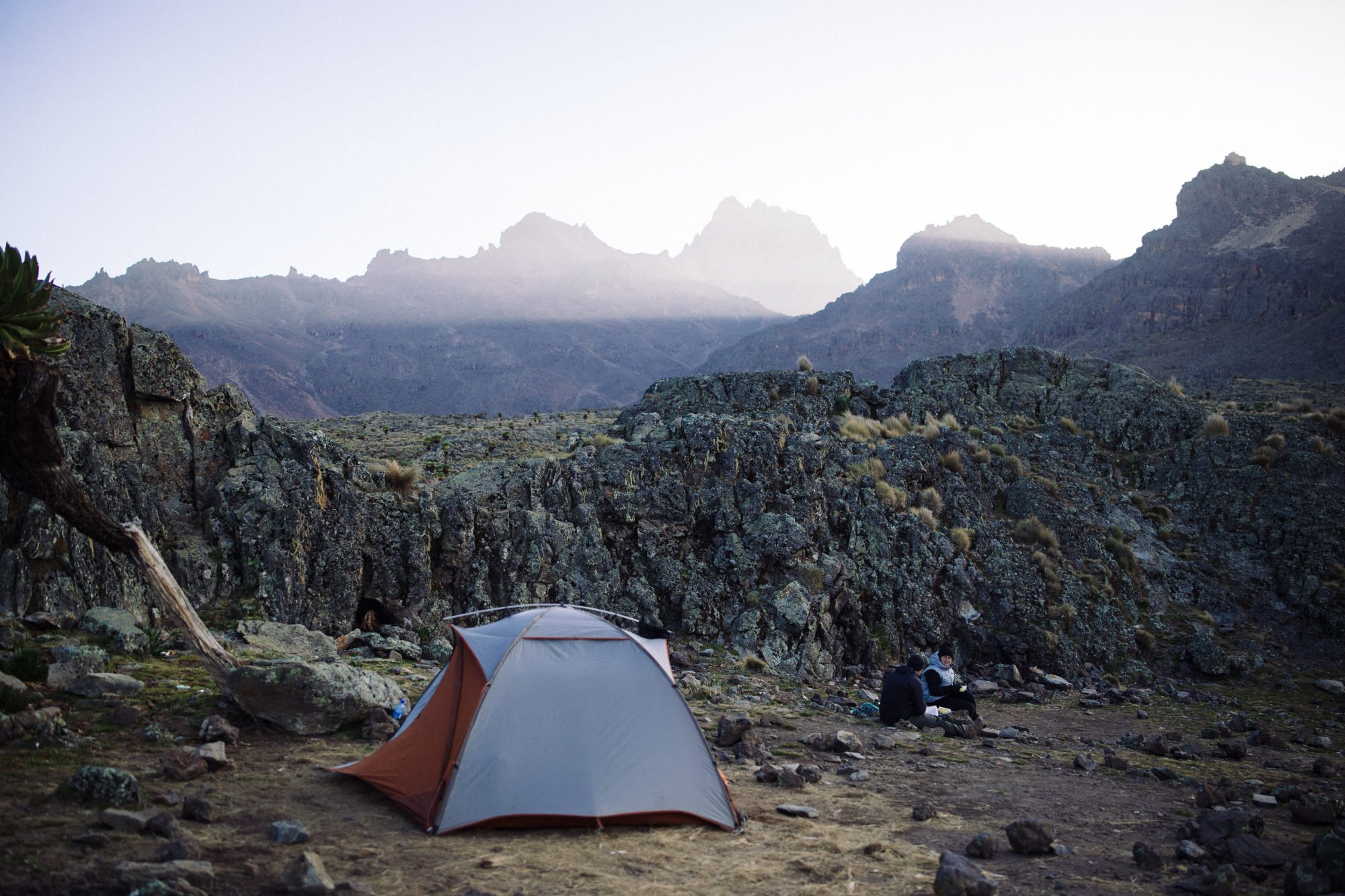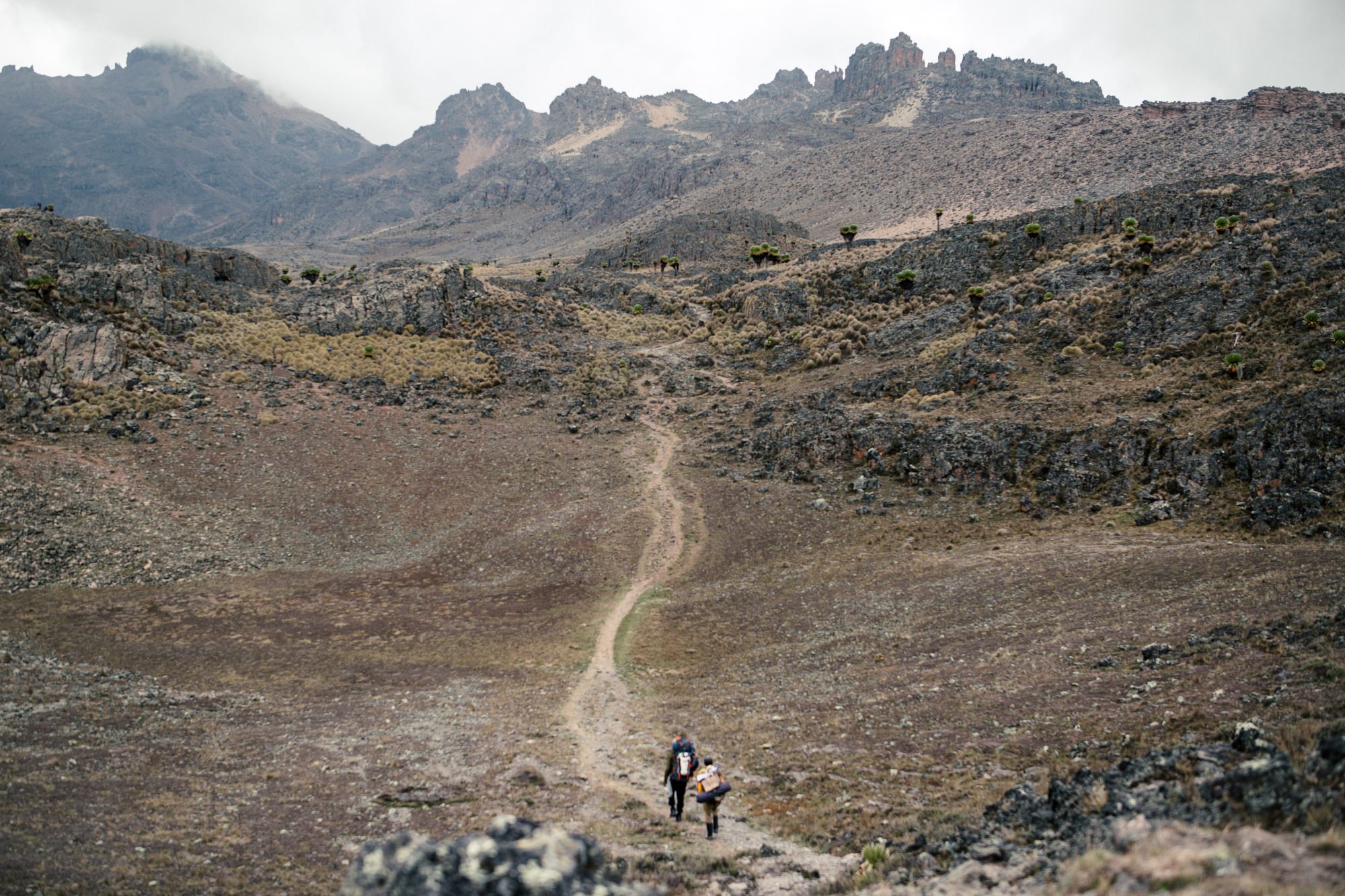
Why Africa’s Mount Kenya risks becoming as polluted as Kilimanjaro, as access to its peaks is made easier for visitors
- The remoteness of Mount Kenya’s peaks has traditionally kept visitor numbers down, but when a road up the extinct volcano enabled more tourism, waste piled up
- The Unesco World Heritage site’s custodians are eyeing a cable car to bring in more money, but those who fear overtourism will ruin the mountain are speaking up
The view from Point Lenana – one of several peaks on Mount Kenya and the highest that can be reached by trekking alone – seems perfect, quite literally above it all, as the soft light of dawn breaks over craggy peaks and still glacial lakes.
We are lucky; there are no large parties or school groups sharing this 4,985-metre-high (16,060ft-high) vantage point this morning, but with the wind whipping through our layers, it is practically too cold to talk.
“You don’t want to stay up here too much longer than 10 minutes,” says our guide, Ian.
None of us has succumbed to altitude sickness but members of the few climbing parties below us don’t seem to have been so fortunate; some are throwing up violently.

It takes nearly three days to hike to a camp before summiting Lenana.
The very remoteness of Africa’s second-highest mountain – an extinct volcano – acts as a control on the number of people who make it this deep into the Mount Kenya National Park & Reserve – and disturb the local way of life.

The Meru and Kikuyu people consider Kirinyaga (Mount Kenya’s Swahili name) sacred. They worship Ngai, the supreme god, while facing the mountain. Sacrifices or libations are made depending on the occasion – a ceremony to end a drought or sickness; harvest or planting seasons; or major life events – at Kigongona Kia Mai, a sacred shrine on the mountain.
But change is afoot, and not just because of climate breakdown – Mount Kenya’s peaks are no longer permanently covered in snow and its melting glaciers are expected to vanish by 2030.
Mount Kenya became a designated national park in 1949 and a Unesco World Heritage site in 1997, but recently the mountain has been gaining popularity more than ever with climbers and hikers; those in Kenya as well as from abroad.

Before the Covid-19 pandemic, fewer than 25,000 people entered the national park each year but in mid-2020, the Ministry of Tourism – in an attempt to keep the finances of parks across Kenya from collapsing while foreign visitors were kept away by the pandemic – cut National Park entry fees by up to 42 per cent for citizens of the country (a discount that lasted until July 2021).
The intensity of the lockdown – which included a lengthy closure of Nairobi’s clubs and bars – meant that when people resurfaced, many were keen to get outside and try new hobbies, much to the delight of mountain communities in central Kenya, where porters and guides had gone for long months without work.
‘It’s still a very white sport’: first Asians join Kenya gravel bike race
Kenya Wildlife Service (KWS), the government agency responsible for conservation and tourism in the nation’s parks and protected areas, also leapt at the opportunity.
A KWS document published this year (“Kenya Parks Investment Prospectus: where nature and communities meet opportunities”) contains a host of suggestions relating to national parks – everything from eco-lodges to zip lines and cable cars in hitherto pristine locations.
“The Mt Kenya cable car is a proposed tourism game-changer that will be located at Themwe Gate in the Forest Reserve to Lake Ellis,” the document envisages.

Like many other mountain guides, Peter Naituli, 24, thinks this is a step too far.
“The most valuable thing about our national parks is that they’re undisturbed,” he says. “This investment thing, it’s people in the government wanting to get rich.
“Let [visitors] get out of breath, prepare for it, feel like they’ve worked to get up the mountain,” the guide says. “Then they can love the place as it actually is. Don’t alter a place in the name of accessibility. That’s not encouraging conservation, it’s letting people trash the environment.”

In the 1980s, a rough track was carved up the slopes of Chogoria, on the eastern side of Mount Kenya – but only the most daring of drivers took it.
In more recent years, though, the track was reconstructed and flattened, allowing far more private cars and even school buses up to Lake Ellis, which is about 18km (11 miles) and 1,530 metres below the Point Lenana summit.
“Opening up the road was a big mistake,” according to Shikuku, who was trained by American non-profit organisation National Outdoor Leadership and has worked as a guide since the 1980s.
Stop with the pavements and zip lines, we don’t need anything else
Combined with the poor enforcement of basic rules by KWS, the improved road has meant issues such as littering and the lighting of illegal campfires have worsened.
Irresponsible tour companies are exacerbating the toll on the environment as well as jeopardising the safety of visitors, says Shikuku.
“The worst are independent companies based out of Nairobi” that lack experience and employ undertrained and underpaid guides and porters to offer clients competitive prices, he says.

Visiting in January, Aref Adamali, 49, a Kenyan who works in economic policy and organic farming, was shocked by how degraded Lake Ellis had become since he visited for the first time, in 2012, when the delicate glacial lake that takes less than 20 minutes to walk around was “paradise”, its catchment area pristine.
He decided to write to KWS.
“Almost every third clump of grass has become an open bush toilet,” Adamali emailed. “Firepits have destroyed the delicate montane grass along the lake shore … [it’s] beautiful from a distance but appalling up close.”
‘It was sensory overload’: how sober travel is driving a new tourism trend
KWS didn’t reply, despite numerous follow-ups. The service also declined to reply to questions posed for this article.
Adamali is now marshalling volunteers to clean up Mount Kenya before it starts to resemble Kilimanjaro. By a conservative estimate, Africa’s highest mountain, in neighbouring Tanzania, is polluted by more than nine tons of human faeces, even after initiatives that removed 90 per cent of the waste.
“I’m happy to start [clean-up initiatives], but this should be a KWS thing. They’re the custodians of the mountain, the ownership should stay with them,” Adamali says.

More widely, Mount Kenya supplies Nairobi, about 140km to the south, with an estimated 95 per cent of its water and generates half of Kenya’s hydropower. Its agricultural basin is considered one of the country’s most productive.
But the increasing pollution has put a toll on water treatment, while a loss of forest cover caused by illegal logging, wildfires and the ravages of invasive species has led to a marked decrease in water volume.
Furthermore, the movement of people into the region will lead to more human-wildlife conflict in the Afro-alpine forests adjacent to Mount Kenya National Park, which are vital elephant migration corridors – strips of undeveloped land that facilitate migrations of the megafauna between ecosystems.
From Air India’s Maharaja to cartoon bear Kumamon, tourism mascots that work
“Communities around the forest are already facing tensions over land use,” says Emma Odera, a natural resources researcher at the Centre for Training and Integrated Research for Arid and Semi-Arid Land Development, based in the town of Nanyuki, a base for Mount Kenya trekkers. “Encroachment has led to fencing of what were once communal lands.
“Most of these challenges can be mitigated through enforcement, and having tourists comply; it’s all about making sure rules are followed so the ecosystem is kept intact,” she says.
Summing up what’s special about Mount Kenya, Naituli says: “It has remarkable biodiversity and is clean compared to Kilimanjaro.
“The number of porters and guides isn’t too saturated, so most who want to have jobs. They aren’t rich men by any stretch of the imagination, but they earn a lot more than Kilimanjaro cooks and porters.”
Rather than a cable car, he says, the only thing KWS needs to do to improve Mount Kenya is to build more and better toilets.
“Stop with the pavements and zip lines, we don’t need anything else,” Naituli says.
This reporting was supported by the International Women’s Media Foundation’s Howard G. Buffet Fund for Women Journalists

